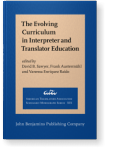Innovations in online interpreter education
A graduate certificate program in community interpreting
Interpreter training has been a late-comer to the rapidly growing field of online education. The Spanish Community Interpreting Graduate Certificate at the Middlebury Institute of International Studies at Monterey was originally designed for a hybrid instructional format, a combination of face-to-face and online modules. In the second iteration of the program in 2015–2016, the design team decided to eliminate the initial residency requirement and offer the introductory modules online. This chapter documents the re-design and development journey of adapting a 30-hour module of traditional face-to-face instruction for an online context. The authors describe the collaboration among subject matter experts, instructional designers and technology specialists to optimize course materials, activities and learning outcomes for an online learning environment. They discuss challenges faced and lessons learned that will benefit others interested in designing and delivering pedagogically-sound online interpreter training that advances the reach and accessibility of the profession.
Article outline
- Introduction
- Background
- Target audience and curriculum
- Four perspectives
- The educational technologist’s perspective
- The program administrator’s perspective
- The course instructor’s perspective
- Adapting curricula and materials
- Re-imagining participation
- The digital learning specialist’s perspective
- Getting started
- Aesthetic and navigation
- (A)synchronicity
- Digital learner training
- Syllabus design
- Lessons learned
- Recommendations
- Conclusion
-
Note
-
References
